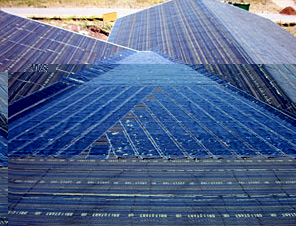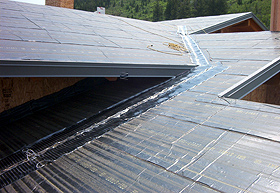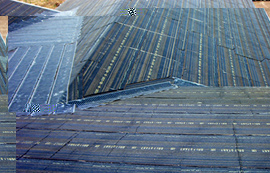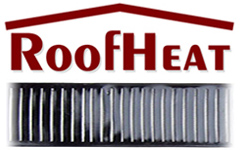| The Installation |
   |
 RoofHeat can be nailed or stapled through, making its installation easier than other systems. Costly and disruptive roof buildups are eliminated with the use of this unique and low profile roof heating element. RoofHeat can be nailed or stapled through, making its installation easier than other systems. Costly and disruptive roof buildups are eliminated with the use of this unique and low profile roof heating element.
This low-voltage system features a conductive polymer heating element that is self-regulating, so it is extremely efficient and will never overheat. |
|
| Installation of Roof Deicing System Components | |
|
Control Units - The master control unit fills the need for a maintenance-free,
UL listed snowmelt system for home and business owners. The control unit features manual override
capability and energy-efficient, under-pavement heating to safely and effectively provide reliable
snow and ice melting for sidewalks, driveways and other outdoor applications.
The design of the control box is extremely robust for any weather situation and is very rugged and easy to use. It is the only control unit of its kind that is UL listed for use in residential areas, which means the control system has passed the rigorous demands required to achieve the industry's highest standards of safety. Being UL listed ensures that your home's fire insurance policy will not be voided by installing the snowmelt system. The advanced design, circuitry and durability of the control unit ensures safe, accurate, and efficient performance.
RoofHeat/FloorHeat - The flexible roof heating element can be quickly rolled out over the area to be heated. RoofHeat can be installed on the entire roof to eliminate any snow or ice from accumulating, or installed in the roof valleys to prevent ice dams from forming. A great advantage to Warmzone roof deicing systems is their versatility. You can roll out the RoofHeat into any pattern to heat any sized area desired. Heat Cable - Heat cable is another option when RoofHeat panels cannot be used. Roof deicing systems that utilize heat cable are not uncommon, and the cable can be used to effectively heat gutters to prevent structural damage from heavy snow and ice. Heat Sink Kits are concrete boards with small pre-cut grooves for
heat cable. The concrete is used as a heat resistance for the roof heating cable. These kits are typically used in retrofit applications but can be installed under roofing material.
|